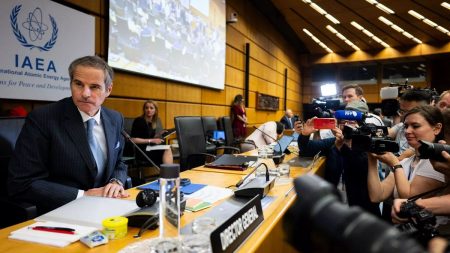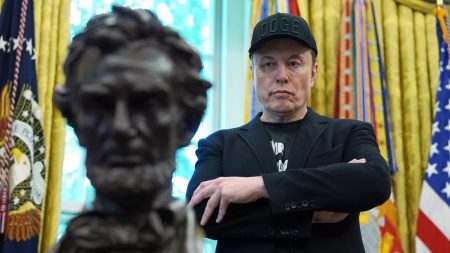The Dawn of a New Era in Syria: Navigating the Transition
The sudden collapse of Bashar al-Assad’s regime after 24 years of iron-fisted rule has ushered in a period of both hope and uncertainty for Syria. The Hayat Tahrir al-Sham (HTS) rebel group, spearheading the insurgency, has taken the reins, working to establish security and initiate a political transition. However, their past association with Al-Qaeda casts a long shadow over their efforts, raising concerns both domestically and internationally. The United States, while acknowledging the need for a stable and inclusive Syria, grapples with the complex reality of engaging with a group it still designates as a terrorist organization. Secretary of State Antony Blinken, in direct contact with HTS, has emphasized the importance of a Syrian-led transition guided by principles of inclusivity, peace, and sovereignty. The international community’s role pivots on supporting this transition while mitigating the risks of further chaos and ensuring the emergence of a truly representative government.
The path forward is fraught with challenges. The remnants of ISIS and other extremist groups still pose a threat, eager to exploit the current instability and regain a foothold. Moreover, the potential for renewed conflict, the emergence of another dictator, or unwanted foreign intervention looms large. The Syrian people, bearing the brunt of decades of conflict, are acutely aware of these challenges and require substantial support from their neighbors and the international community. The US, recognizing the high stakes involved, advocates for a collaborative approach with its allies to guide Syria towards a more stable and democratic future. This complex balancing act requires navigating the delicate terrain of engaging with HTS while simultaneously addressing the security concerns posed by extremist elements.
A Diplomatic Tightrope: The Gaza Ceasefire and Hostage Crisis
Concurrent with the Syrian crisis, the Israeli-Palestinian conflict continues to demand urgent attention. Secretary Blinken, during his final Middle East tour as Secretary of State, has intensified efforts to broker a ceasefire between Israel and Hamas. The focus remains on securing the release of the remaining hostages, a humanitarian imperative that has taken center stage in international negotiations. President-elect Donald Trump’s forceful rhetoric, threatening dire consequences if hostages are not immediately released, adds another layer of complexity to the situation. This stance, combined with his stated reluctance to involve the US in Syria, complicates Blinken’s efforts and presents a significant challenge for the outgoing Biden administration.
The urgency of the hostage situation is underscored by the devastating impact of the ongoing conflict. The recent air strike on a school sheltering displaced families in Gaza City, resulting in the deaths of several civilians, including women and children, serves as a stark reminder of the human cost of this protracted conflict. The conflicting narratives surrounding the number of casualties, with Palestinian sources reporting significantly higher numbers than Israeli sources, further highlight the deep divide and the difficulties in achieving a lasting peace. The Biden administration, seeking a diplomatic victory before its term ends, faces the daunting task of navigating these complexities and securing a ceasefire that addresses the humanitarian crisis and paves the way for a more sustainable future.
Navigating a Turbulent Landscape: The Future of US Engagement in the Middle East
Blinken’s final trip to the Middle East comes at a critical juncture, with the evolving situation in Syria and the ongoing Gaza conflict demanding immediate attention. His discussions with leaders in Iraq, Türkiye, and Jordan reflect the urgency of finding solutions to these complex and interconnected challenges. The outgoing Biden administration faces the dual imperative of addressing the immediate humanitarian crises while also laying the groundwork for a more stable future in the region. The incoming Trump administration’s stated policies, including its skepticism towards US involvement in Syria and its hardline stance on the hostage situation, present a potential shift in US foreign policy that could significantly impact the trajectory of both conflicts.
The transition of power in Washington adds another layer of complexity to an already volatile situation. Blinken’s efforts to secure a ceasefire in Gaza and support a peaceful transition in Syria are taking place against the backdrop of a looming change in US leadership. The uncertainties surrounding the future direction of US foreign policy in the region create a challenging environment for diplomacy. The incoming administration will inherit these complex challenges and will need to navigate a delicate balance between its stated priorities and the realities on the ground. The future of US engagement in the Middle East hinges on finding a way to address the immediate crises while also pursuing long-term solutions that promote stability, peace, and human rights. The delicate balance between diplomacy, security concerns, and humanitarian imperatives will continue to shape the US role in this volatile region for the foreseeable future.














